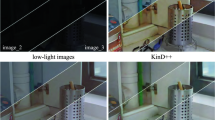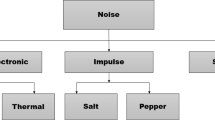Abstract
Challenges remain in fluorescence reflectance imaging (FRI) in in vivo experiments, since the target fluorescence signal is often contaminated by the high level of background signal originated from autofluorescence and leakage of excitation light. In this paper, we propose an image subtraction algorithm based on two images acquired using two excitation filters with different spectral regions. One in vivo experiment with a mouse locally injected with fluorescein isothiocyanate (FITC) was conducted to calculate the subtraction coefficient used in our studies and to validate the subtraction result when the exact position of the target fluorescence signal was known. Another in vivo experiment employing a nude mouse implanted with green fluorescent protein (GFP) — expressing colon tumor was conducted to demonstrate the performance of the employed method to extract target fluorescence signal when the exact position of the target fluorescence signal was unknown. The subtraction results show that this image subtraction algorithm can effectively extract the target fluorescence signal and quantitative analysis results demonstrate that the target-to-background ratio (TBR) can be significantly improved by 33.5 times after background signal subtraction.
Similar content being viewed by others
References
R. A. Sheth, R. Upadhyay, L. Stangenberg, R. Sheth, R. Weissleder, U. Mahmood. Improved detection of ovarian cancer metastases by intraoperative quantitative fluorescence protease imaging in a pre-clinical model. Gynecologic Oncology, vol. 112, no. 3, pp. 616–622, 2009.
P. Puvanakrishnan, J. Park, P. Diagaradjane, J. A. Schwartz, C. L. Coleman, K. L. Gill-Sharp, K. L. Sang, J. D. Payne, S. Krishnan, J. W. Tunnell. Near-infrared narrowband imaging of gold/silica nanoshells in tumors. Journal of Biomedical Optics, vol. 14, no. 2, 024044, 2009.
N. C. Deliolanis, J. Dunham, T. Wurdinger, J. L. Figueiredo, B. A. Tannous, V. Ntziachristos. In-vivo imaging of murine tumors using complete-angle projection fluorescence molecular tomography. Journal of Biomedical Optics, vol. 14, no. 3, 030509, 2009.
J. Haller, D. Hyde, N. Deliolanis, R. de Kleine, M. Niedre, V. Ntziachristos. Visualization of pulmonary inflammation using noninvasive fluorescence molecular imaging. Journal of Applied Physiology, vol. 104, no. 3, pp. 795–802, 2008.
E. L. Kaijzel, G. van der Pluijm, C.W. Lowik. Whole-body optical imaging in animal models to assess cancer development and progression. Clinical Cancer Research, vol. 13, no. 12, pp. 3490–3497, 2007.
K. Licha, C. Olbrich. Optical imaging in drug discovery and diagnostic applications. Advanced Drug Delivery Reviews, vol. 57, no. 8, pp. 1087–1108, 2005.
M. Rudin, R. Weissleder. Molecular imaging in drug discovery and development. Nature Reviews Drug Discovery, vol. 2, no. 2, pp. 123–131, 2003.
X. Montet, J. L. Figueiredo, H. Alencar, V. Ntziachristos, U. Mahmood, R. Weissleder. Tomographic fluorescence imaging of tumor vascular volume in mice. Radiology, vol. 242, no. 3, pp. 751–758, 2007.
X. Montet, V. Ntziachristos, J. Grimm, R. Weissleder. Tomographic fluorescence mapping of tumor targets. Cancer Research, vol. 65, no. 14, pp. 6330–6336, 2005.
V. Ntziachristos, E. A. Schellenberger, J. Ripoll, D. Yessayan, E. Graves, A. J. Bogdanov, L. Josephson, R. Weissleder. Visualization of antitumor treatment by means of fluorescence molecular tomography with an annexin vcy5.5 conjugate. Proceedings of the National Academy of Sciences of the United States of America, vol. 101, no. 33, pp. 12294–12299, 2004.
G. D. Luker, K. E. Luker. Optical imaging: Current applications and future directions. Journal of Nuclear Medicine, vol. 49, no. 1, pp. 1–4, 2008.
V. Ntziachristos. Fluorescence molecular imaging. Annual Review of Biomedical Engineering, vol. 8, no. 1, pp. 1–33, 2006.
V. Ntziachristos, J. Ripoll, L. V. Wang, R. Weissleder. Looking and listening to light: The evolution of whole-body photonic imaging. Nature Biotechnology, vol. 23, no. 3, pp. 313–320, 2005.
A. Garofalakis, G. Zacharakis, H. Meyer, E. N. Economou, C. Mamalaki, J. Papamatheakis, D. Kioussis, V. Ntziachristos, J. Ripoll. Three-dimensional in vivo imaging of green fluorescent protein-expressing T cells in mice with noncontact fluorescence molecular tomography. Molecular Imaging, vol. 6, no. 2, pp. 96–107, 2007.
E. I. Altinoglu, T. J. Russin, J. M. Kaiser, B. M. Barth, P. C. Eklund, M. Kester, J. H. Adair. Near-infrared emitting fluorophore-doped calcium phosphate nanoparticles for in vivo imaging of human breast cancer. ACS Nano, vol.2, no. 10, pp. 2075–2084, 2008.
K. E. Adams, S. Ke, S. Kwon, F. Liang, Z. Fan, Y. Lu, K. Hirschi, M. E. Mawad, M. A. Barry, E. M. Sevick-Muraca. Comparison of visible and near-infrared wavelength-excitable fluorescent dyes for molecular imaging of cancer. Journal of Biomedical Optics, vol. 12, no. 2, 024017, 2007.
T. A. Zdobnova, S. G. Dorofeev, P. N. Tananaev, R. B. Vasiliev, T. G. Balandin, E. F. Edelweiss, O. A. Stremovskiy, I. V. Balalaeva, I. V. Turchin, E. N. Lebedenko, V. P. Zlomanov, S. M. Deyev. Fluorescent immunolabeling of cancer cells by quantum dots and antibody scfv fragment. Journal of Biomedical Optics, vol. 14, no. 2, 021004, 2009.
J. R. Mansfield, K. W. Gossage, C. C. Hoyt, R. M. Levenson. Autofluorescence removal, multiplexing, and automated analysis methods for in-vivo fluorescence imaging. Journal of Biomedical Optics, vol. 10, no. 4, 041207, 2005.
H. Xu, B. W. Rice. In-vivo fluorescence imaging with a multivariate curve resolution spectral unmixing technique. Journal of Biomedical Optics, vol. 14, no. 6, 064011, 2009.
Y. Koyama, Y. Hama, Y. Urano, D. M. Nguyen, P. L. Choyke, H. Kobayashi. Spectral fluorescence molecular imaging of lung metastases targeting HER2/neu. Clinical Cancer Research, vol. 13, no. 10, pp. 2936–2945, 2007.
N. C. Deliolanis, T. Wurdinger, L. Pike, B. A. Tannous, X. O. Breakefield, R. Weissleder, V. Ntziachristos. In vivo tomographic imaging of red-shifted fluorescent proteins. Biomedical Optics Express, vol. 2, no. 4, pp. 887–900, 2011.
F. Liu, X. Liu, D. Wang, B. Zhang, J. Bai. A parallel excitation based fluorescence molecular tomography system for whole-body simultaneous imaging of small animals. Annals of Biomedical Engineering, vol. 38, no. 11, pp. 3440–3448,2010.
M. Gao, G. Lewis, G. M. Turner, A. Soubret, V. Ntziachristos. Effects of background fluorescence in fluorescence molecular tomography. Applied Optics, vol. 44, no. 26, pp. 5468–5474, 2005.
S. Psycharakis, G. Zacharakis, A. Garofalakis, R. Favicchio, J. Ripoll. Autofluorescence removal from fluorescence tomography data using multispectral imaging. In Proceedings of SPIE-OSA Biomedical Optics, Munich, Germany, vol. 6626, paper 6626 14, 2007.
Author information
Authors and Affiliations
Corresponding author
Additional information
This work was supported by National Basic Research Program of China (973 Programme) (No. 2011CB707701), National Major Scientific Instrument and Equipment Development Project (No. 2011YQ030114), National Natural Science Foundation of China (Nos. 81071191, 60831003, 30930092, and 30872633), Beijing Natural Science Foundation (No. 3111003), and Tsinghua-Yue-Yuen Medical Science Foundation.
Fei Liu received the bachelor degree in biomedical engineering from Zhejiang University, Zhejiang, PRC in 2008. She is currently a Ph. D. candidate in the Department of Biomedical Engineering, Tsinghua University, Beijing, PRC.
Her research interests include fluorescence molecular tomography for small animal imaging.
Xin Liu received the bachelor and master degrees from the Fourth Military Medical University, Xi’an, PRC in 2001 and 2006, respectively. He is now a Ph.D. candidate in the Department of Biomedical Engineering, Tsinghua University, Beijing, PRC.
His research interests include fluorescence molecular tomography and medical image processing.
Bin Zhang received the master degree in mechanical and electronic engineering from University of Science and Technology of China in 2007. From 2007 to 2009, he was a research assistant in Shenzhen Institute of Advanced Integration Technology, Chinese Academy of Sciences, PRC. He is now a Ph.D. candidate in the Department of Biomedical Engineering, Tsinghua University, Beijing, PRC.
His research interests include fluorescence molecular tomography for small animal.
Jing Bai received the M. Sc. and Ph.D. degrees from Drexel University, Philadelphia, PA, USA in 1983 and 1985, respectively. From 1985 to 1987, she was a research associate and assistant professor at the Biomedical Engineering and Science Institute, Drexel University. In 1988, 1991, and 2000, she became an associate professor, professor, and Cheung Kong chair professor at the Department of Biomedical Engineering, Tsinghua University, Beijing, PRC. Since 1997, she has been an associate editor for IEEE Transactions on Information Technology in Biomedicine. She has authored or coauthored ten books and more than 300 journal papers.
Her research interests include mathematical modeling and simulation of cardiovascular system, optimization of cardiac assist devices, medical ultrasound, telemedicine, home health care network and home monitoring devices, and infrared imaging.
Rights and permissions
About this article
Cite this article
Liu, F., Liu, X., Zhang, B. et al. Extraction of target fluorescence signal from in vivo background signal using image subtraction algorithm. Int. J. Autom. Comput. 9, 232–236 (2012). https://doi.org/10.1007/s11633-012-0639-z
Received:
Revised:
Published:
Issue Date:
DOI: https://doi.org/10.1007/s11633-012-0639-z




